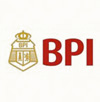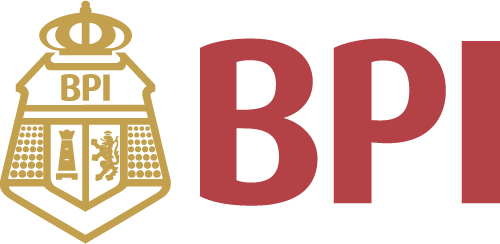All Categories


Motic 1100400800111 Model DMWB1-223ASC Digital Binocular Compound Microscope, WF10x Eyepieces, ASC High-Contrast Objectives, 40x-1000x Magnification, Brightfield, Halogen Illumination, Mechanical Stage, 100V-240V, Includes CCD Camera and Software
Share Tweet
Get it between 2025-07-24 to 2025-07-31. Additional 3 business days for provincial shipping.
*Price and Stocks may change without prior notice
*Packaging of actual item may differ from photo shown
- Electrical items MAY be 110 volts.
- 7 Day Return Policy
- All products are genuine and original








Motic 1100400800111 Model DMWB1-223ASC Digital Features
-
Digital compound microscope and 1/3" CCD camera with USB 2.0, S-video, and RCA outputs for capturing or displaying images on a computer or projector (sold separately)
-
Binocular viewing head with a pair of 20mm 10x widefield eyepieces and fixed 30-degree vertical inclination to reduce eye and neck strain
-
Forward-facing nosepiece with 4x, 10x, 40xS, and 100xS (oil) ASC high-contrast objectives that provide sharp color distinction and keep the image centered and focused when magnification is changed
-
Brightfield, halogen illumination with rheostat and 1.25 NA Abbe condenser with iris diaphragm for clear examination and light control
-
Mechanical stage locks slide into place and provides precise slide manipulation along the X- and Y-axis, and coaxial nested coarse and fine focus knobs speed focusing
About Motic 1100400800111 Model DMWB1-223ASC Digital
The Motic 1100400800111 Model DMWB1-223ASC Digital Binocular Compound Microscope has a pair of 10x widefield eyepieces, a forward-facing nosepiece with four high-contrast objectives, halogen illumination, nested coarse and fine focus, 1.25 NA Abbe condenser with iris diaphragm, and a mechanical stage. The digital and analog camera captures and displays images on a computer or projector (sold separately). The binocular viewing head has a fixed inclination to reduce eye and neck strain. A forward-facing nosepiece eases changing objectives. ASC (achromatic super contrast) high-contrast objectives provide sharp color distinction. The 40xS and 100xS objectives are retractable and spring-loaded to prevent damage to the slide or objective when focusing. The 100xS objective is also an oil objective that provides increased resolution over a standard objective. A digital compound microscope is used for inspection and dissection of specimens when two-dimensional images are desired, and where image capture, detailed records, or documentation is required. The digital and analog camera has a CCD color sensor for displaying still microscopy images and streaming live videos to a computer or projector. It includes image capture and editing software that provides still image and live video capture and editing capability, including measurement functions. The software supports the Motic SFC file format and is compatible with Windows XP and above, and Mac OS X. The camera has USB 2.0, S-video, and RCA outputs. The microscope has lower (diascopic) brightfield illumination that transmits light up through the specimen for enhanced visibility of translucent and transparent objects. Brightfield (BF) illumination allows the specimen to absorb light, resulting in a dark image on a light background. The halogen light source provides bright light in a concentrated path. A rheostat controls the amount of light emanating from the lamp. The Abbe condenser can be adjusted to control the distance of the light from the stage and has an iris diaphragm to optimize the amount of light illuminating the specimen. Blue, green, and yellow filters are included to modify the light to suit various specimens. The mechanical stage locks the slide into place and provides precise slide manipulation along the X- and Y-axis. Coaxial coarse and fine focus knobs are nested to speed focusing for left-and right-handed viewers, and tension adjustment ensures specimen stays focused during viewing. Microscope Head and Optics SpecificationsHeadBinocularMagnification range40x-1000xHead inclination30 degreesEyepieces (20mm)WF10xNosepieceQuadruple, forward-facingObjectives, ASC high-contrast4x, 10x, 40xS, 100xS (oil) Microscope Illumination and Stage SpecificationsFocus typeCoaxial coarse and fineCondenser1.25 NA AbbeLight sourceHalogen with rheostat, 12V/20WDiaphragmIrisIllumination typeBrightfieldStage typeMechanicalPower100V-240V W is width, the horizontal distance from left to right; D is depth, the horizontal distance from front to back. Camera SpecificationsDigital resolution720 x 576 effective pixelsAnalog resolution, S-video and RCA550 TV linesImage typeStill image and video display and captureCamera sensor1/3" Color CCDComputer connectionUSB 2.0File formatSFC (Motic)Software packageImage capture and editing for Windows XP and above; Mac OS XCamera driver compatibilityWindows XP and above; Mac OS X Microscopes are instruments used to enhance the resolution of an object or image. Types include compound, stereo, or digital. Compound microscopes use a compound optical system with an objective lens and an eyepiece. Stereo microscopes show object depth in a three-dimensional image. Digital microscopes are used to display an image on a monitor, rather than looking through a lens. Microscopes can have monocular (one), binocular (two), or trinocular (three) eyepieces, with varying magnification abilities. Magnification ability refers to the size of an image. Resolution, also known as re





















